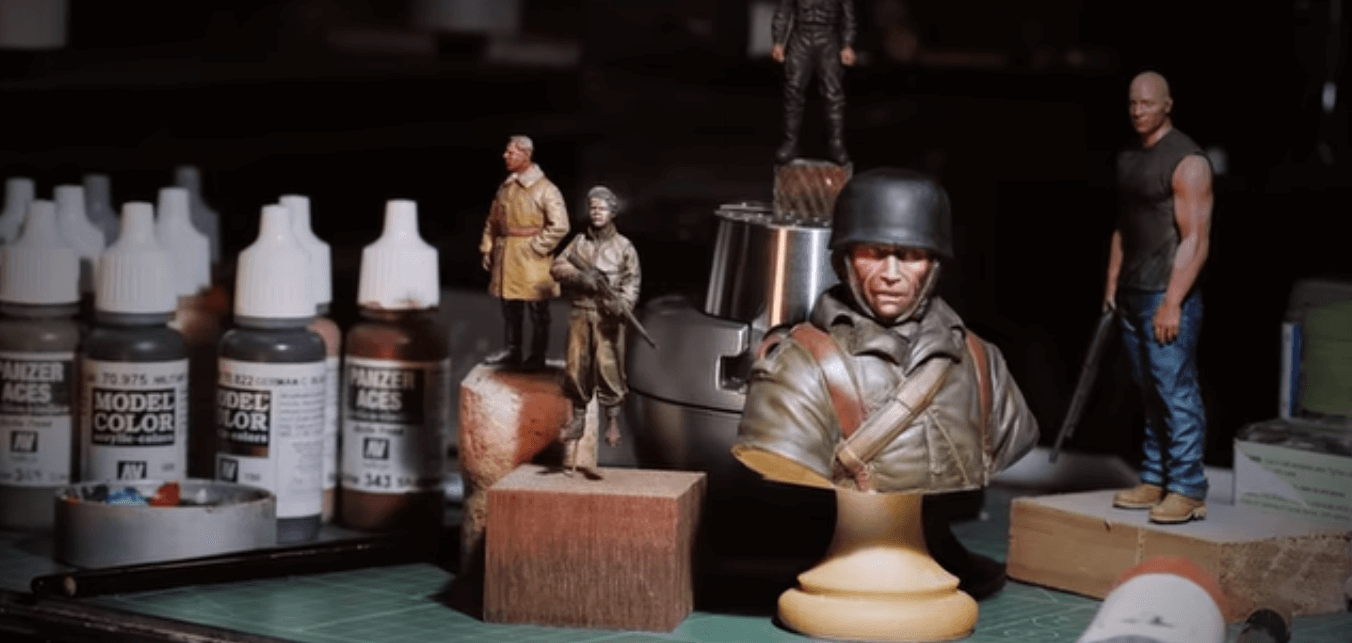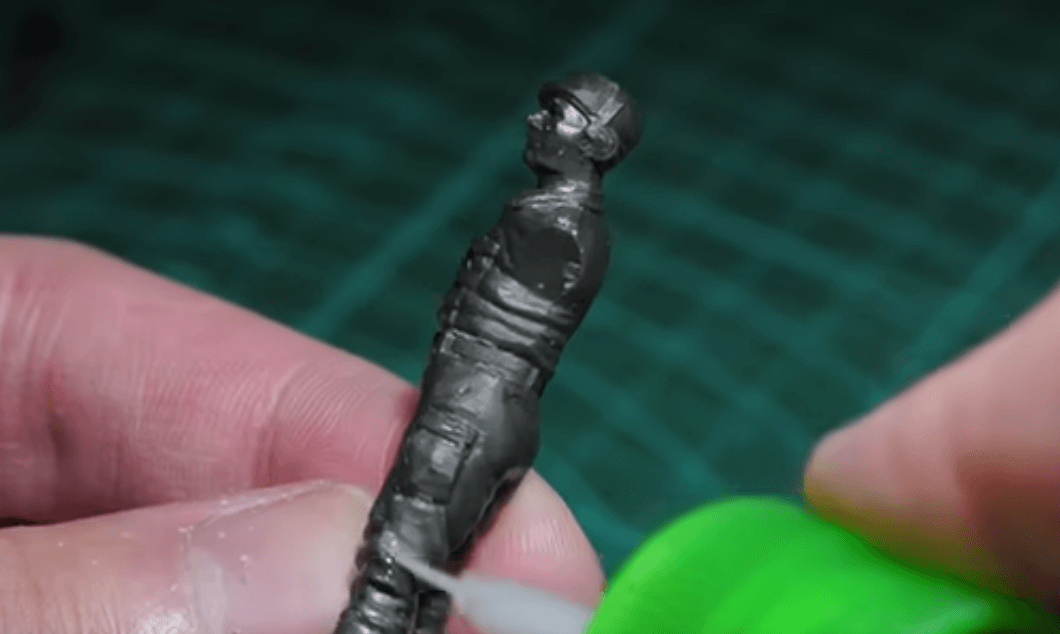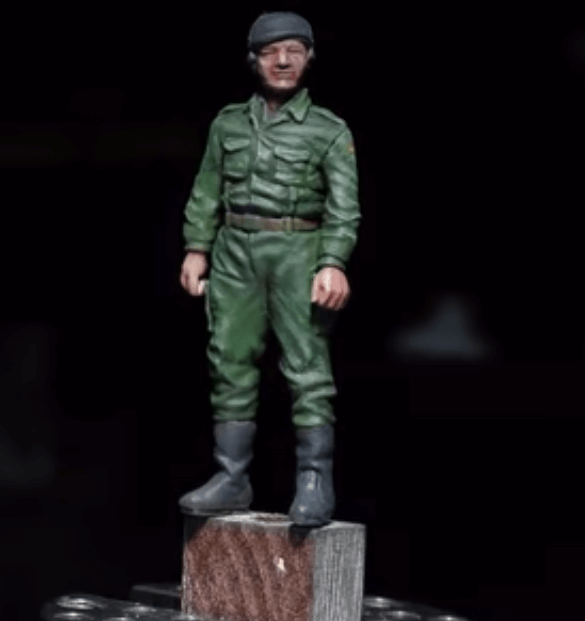Pour savoir comment peindre des figurines, vous devez garder à l'esprit un certain nombre d'éléments. Dans cet article de blog, nous allons vous expliquer les bases pour que vous puissiez créer votre propre chef-d'œuvre. Tout d'abord, examinons les types de peintures que vous pouvez utiliser. Il y a les acryliques, les émaux et des marques comme Model Master qui sont à base de laque. Ensuite, il y a la préparation de la surface : quel type de surface avez-vous ? La figurine elle-même ou peut-être un accessoire ? Enfin, nous aborderons le processus de peinture proprement dit avec quelques étapes et techniques de base pour vous aider à démarrer. Alors, commençons !
REMARQUE : cet article de blog est destiné aux peintres plus avancés et non aux débutants. Si vous êtes novice en matière de peinture, n'hésitez pas à consulter d'abord nos autres articles de blog sur le sujet !
1. Choisir la bonne peinture
Lorsqu'il s'agit de peindre des figurines, il convient de garder à l'esprit un certain nombre de points pour obtenir les meilleurs résultats. Tout d'abord, il est important de choisir la bonne peinture. La peinture acrylique est une bonne option pour les figurines car elle est durable et peut être appliquée directement sur le plastique. Toutefois, si vous souhaitez obtenir un aspect plus naturel, la peinture à base d'eau peut s'avérer un meilleur choix.
2. Préparer la figure pour la peinture
Avant de peindre une figurine, il est important de prendre le temps de préparer la surface. Cela permettra à la peinture d'adhérer correctement et de ne pas s'écailler plus tard. Pour préparer la figurine à la peinture, commencez par la nettoyer avec un bloc d'eau et de savon doux. Utilisez ensuite du papier de verre à grain fin pour poncer légèrement toutes les zones rugueuses. Une fois que la figurine est lisse, appliquez une couche d'apprêt. Cela permettra à la peinture de mieux adhérer à la surface et d'obtenir une couleur de fond homogène. Laissez l'apprêt sécher complètement avant de passer à la peinture. Avec un peu de préparation, vous serez sûr d'obtenir d'excellents résultats lorsque vous peindrez votre figurine.
3. Peindre la figure
Peindre une figure peut être une expérience à la fois gratifiante et stimulante. Bien qu'il puisse être tentant de prendre un pinceau et de commencer à peindre, vous devez garder à l'esprit certaines choses qui vous aideront à réussir votre peinture. Tout d'abord, prenez le temps d'étudier la figure que vous souhaitez peindre. Observez ses proportions et réfléchissez à la forme du corps. Ensuite, décidez des couleurs que vous voulez utiliser. Pensez à la façon dont la lumière frappera la figure et à l'ambiance que vous souhaitez créer. Une fois que vous avez un plan, commencez à peindre. Travaillez lentement et soigneusement, en prêtant attention aux détails. N'oubliez pas qu'il ne s'agit pas de créer une réplique parfaite de la figure, mais plutôt d'en capturer l'essence. Avec de l'entraînement, vous serez en mesure de peindre des figurines à la fois belles et uniques.
4. Laisser sécher la peinture
Il est essentiel de laisser sécher la peinture lorsque l'on peint des figurines. Si la peinture n'est pas complètement sèche, elle risque de faire des bavures ou de s'étaler, ce qui gâchera l'aspect de la figurine. En outre, la peinture mouillée peut être difficile à travailler, ce qui complique l'obtention de l'effet désiré. Laisser sécher la peinture vous permet également de vérifier les erreurs que vous avez pu commettre en peignant. Une fois la peinture sèche, vous pouvez poncer les imperfections et repeindre les zones qui en ont besoin. Ainsi, la prochaine fois que vous peindrez vos figurines, veillez à laisser la peinture sécher complètement avant de passer à l'étape suivante.
5. Sceller et protéger la peinture
Pour sceller et protéger la peinture, vous devez d'abord nettoyer la surface de la figurine avec de l'alcool. S'il y a des résidus graisseux sur la surface de la figurine, ils empêcheront la peinture d'adhérer correctement. Une fois la surface propre et sèche, vous pouvez sceller et protéger la peinture en appliquant une couche transparente de laque ou de vernis. Veillez à utiliser un pinceau ou une éponge pour éviter de laisser des traces de doigts sur la figurine. Appliquez plusieurs couches fines, en laissant chaque couche sécher complètement avant d'appliquer la suivante. Lorsque vous aurez terminé, votre figurine devrait être recouverte d'une couche brillante et protectrice qui aidera à sceller et à protéger la peinture pendant de nombreuses années. Merci de votre lecture !
6. Exposez votre figurine peinte !
Exposer votre figurine peinte est un excellent moyen de mettre en valeur votre travail et votre créativité. Que vous choisissiez d'exposer votre figurine sur une étagère, dans une boîte d'ombre ou même dans un cadre, il y a quelques points à garder à l'esprit pour que votre figurine soit la plus belle possible. Tout d'abord, tenez compte de l'éclairage de la zone d'exposition que vous avez choisie. Un excès de lumière peut faire pâlir les couleurs, tandis qu'un manque de lumière peut empêcher de voir les détails de votre œuvre. Ensuite, assurez-vous que votre figurine est bien fixée et qu'elle ne risque pas de tomber ou de se casser. Enfin, prenez le temps de disposer d'autres éléments autour de votre figurine, tels que des accessoires, afin de créer une exposition équilibrée et attrayante. Avec un peu d'organisation, vous pouvez transformer votre figurine peinte en une œuvre d'art que vous serez fier de montrer.
Conclusion
Après avoir poncé la figurine, appliquez une fine couche de peinture. Vous pouvez utiliser des peintures acryliques pour ce projet. Laissez sécher la première couche avant d'en ajouter d'autres. Lorsque vous êtes satisfait de la couverture, ajoutez des détails et des reflets à l'aide d'un pinceau plus fin. Enfin, appliquez un vernis transparent pour protéger la peinture contre l'écaillage et la décoloration au fil du temps. Grâce à ces conseils, vous pourrez donner une nouvelle vie à vos figurines !



